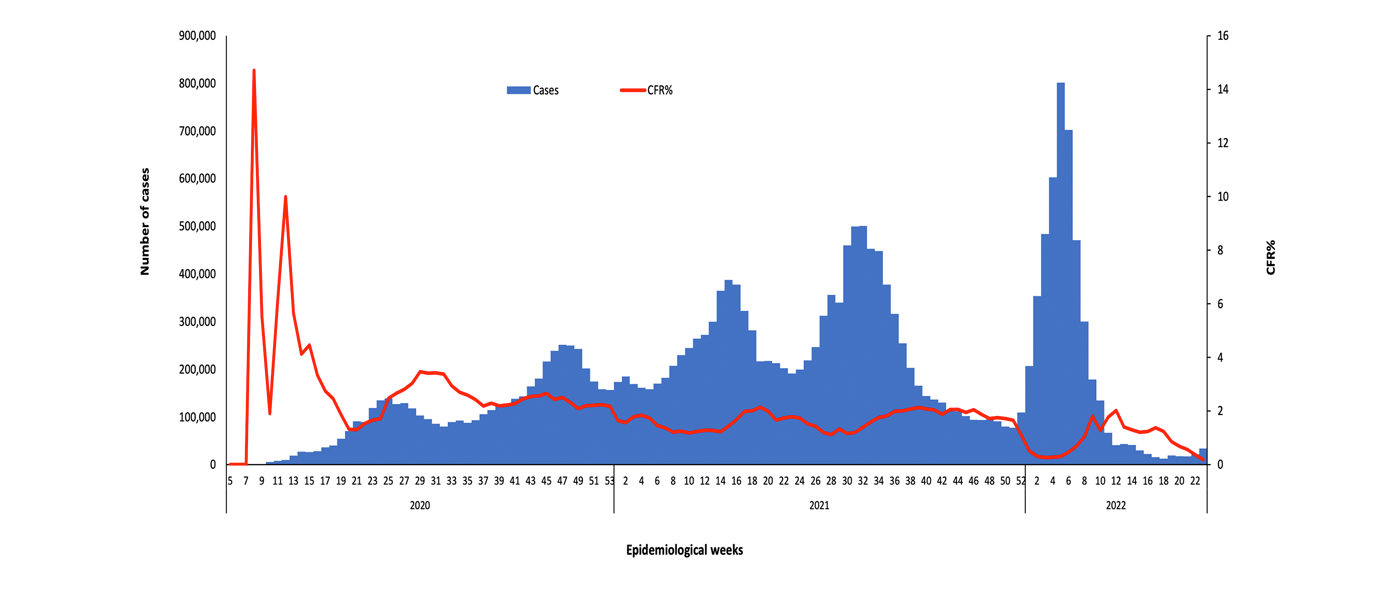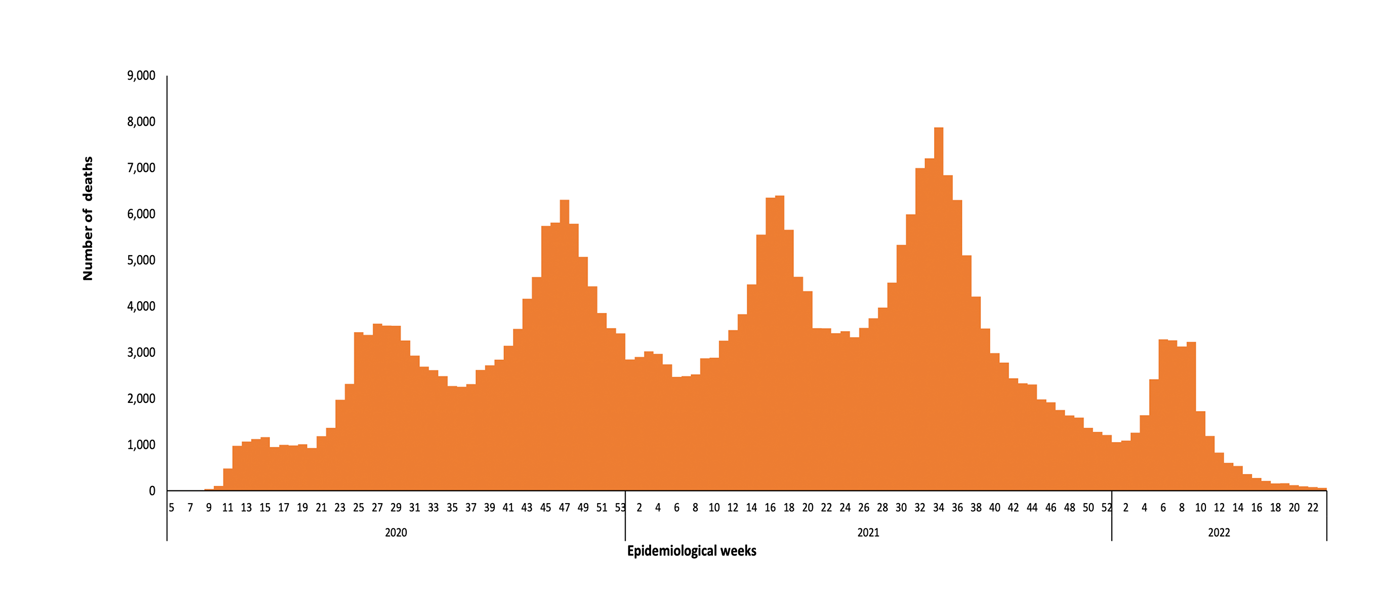The coronavirus disease COVID-19 continues to spread at the regional and global levels. As of 11 June 2022, the global cumulative incidence reached 533 036 685 reported cases and 6 320 742 associated deaths at a case-fatality ratio (CFR) of 1.19%. Meanwhile, the 22 countries of the Eastern Mediterranean Region (EMR) have reported a total of 21 825 593 cases, representing about 4% of the global count, with 343 344 associated deaths (CFR 1.57%). Most countries in the Region are in the community transmission phase.
Since the beginning of the outbreak, the country that has reported the highest number of total cases in the Region is Islamic Republic of Iran (7 233 528; 33.14% of the Region’s total), followed by Iraq (2 329 662; 10.67%) and Jordan (1 697 673; 7.78%). Islamic Republic of Iran also reported the highest number of total COVID-19-associated deaths (141 349; CFR 1.95 %) followed by Pakistan (30 381; CFR 1.98%) and Tunisia (28 655; CFR 2.74%). The highest CFRs were reported by Yemen (18.18%) followed by Sudan (7.92%) and Syria (5.63%), while the lowest CFRs were reported by United Arab Emirates, Bahrain (0.25% for both) and Qatar (0.18%).
During epidemiological week 23, the Region reported an increase in cases by 56.0% when compared to the previous week (33 589 cases compared to 21 543 cases). A decrease of 21% was also observed for associated deaths (62 deaths in the current week compared to 78 deaths in the previous week).
The weekly number of cases have increased in 16 out of 22 countries in the Region. While the number of cases have decreased in Somalia at 100%, Sudan at 55%, Iran at 33%, and Djibouti at 33% as compared to the previous week. This week the number of COVID-19-associated deaths also decreased in all countries of the Region except in Iran which observed a 100% increase in the number of cases and Sudan which observed a 25% increase in the number of cases as compared to the previous week.*
In terms of testing, a total of 397 306 137 laboratory tests were conducted since the start of the outbreak across the Region including 2 378 822 tests in week 23, which shows a 24% increase compared to the previous week when 1 918 929 tests were conducted. The highest number of PCR tests were reported from United Arab Emirates (164 899 913), followed by Islamic Republic of Iran (52 430 924) and Saudi Arabia (42 880 569). The average positivity rate for the Region is 5.5%. WHO recommends a positivity rate of around 3% to 12% as a general benchmark indicating adequate testing, which was achieved in most countries of the Region.
Meanwhile, COVID-19 vaccination continues across the Region. The total number of doses administered so far in the 22 countries is 743 841 495. Pakistan has administered the highest number of doses 25 802 1731, followed by Islamic Republic of Iran at 149 476 015 and Egypt at 87 579 568. On the other hand, Somalia (2 984 339), Yemen (859 241) and Djibouti (204 396) administrated the lowest number of COVID-19 doses in the Region.
Supporting countries in the Region
The regional incident management support team continues to coordinate the response and provide technical support to countries and partners in the Region in the areas of coordination and partnership, surveillance, laboratory capacity, clinical management, infection prevention and control, risk communication and community engagement, points of entry according to the International Health Regulations (2005), research, health systems, and essential health services among others.


For more data from the Region, please visit the COVID-19 dashboard.
*Reporting on weekly relative difference instead of cumulative difference to better reflect the extent of the COVID-19 pandemic as we witness a decline in reported cases. This decline could be partially due to the change in the frequency and quality of data being shared by some countries as they moved to reporting through weekly aggregated data.
**The data on vaccination is obtained from a number of sources including media reports and country websites for ministries of health.
Subscribe to the monthly infectious hazard preparedness newsletter of WHO’s Health Emergencies Programme for the latest data and analysis on the epidemic- and pandemic-prone diseases, as well as news on outbreak preparedness and response within WHO’s Eastern Mediterranean Region.




